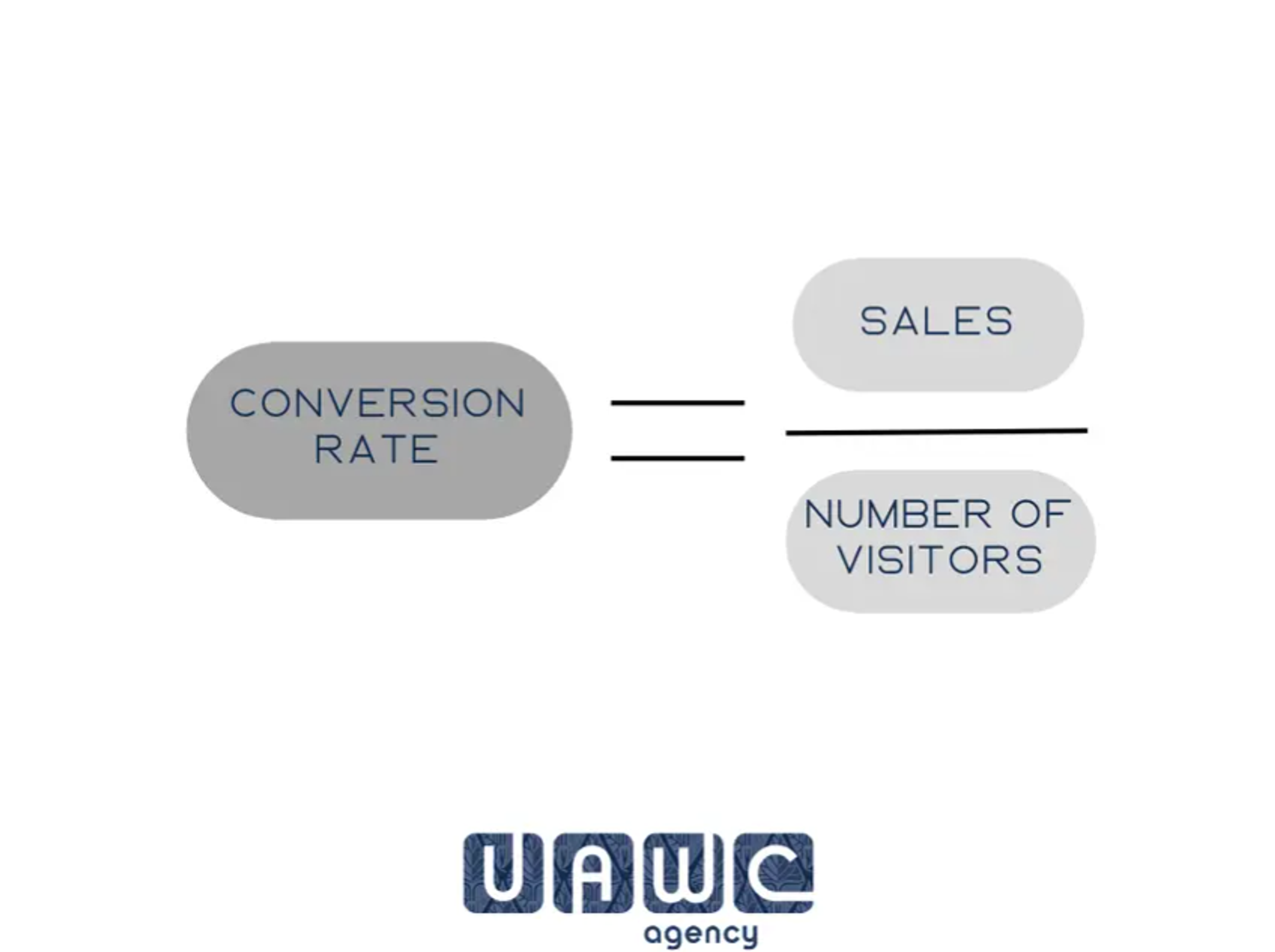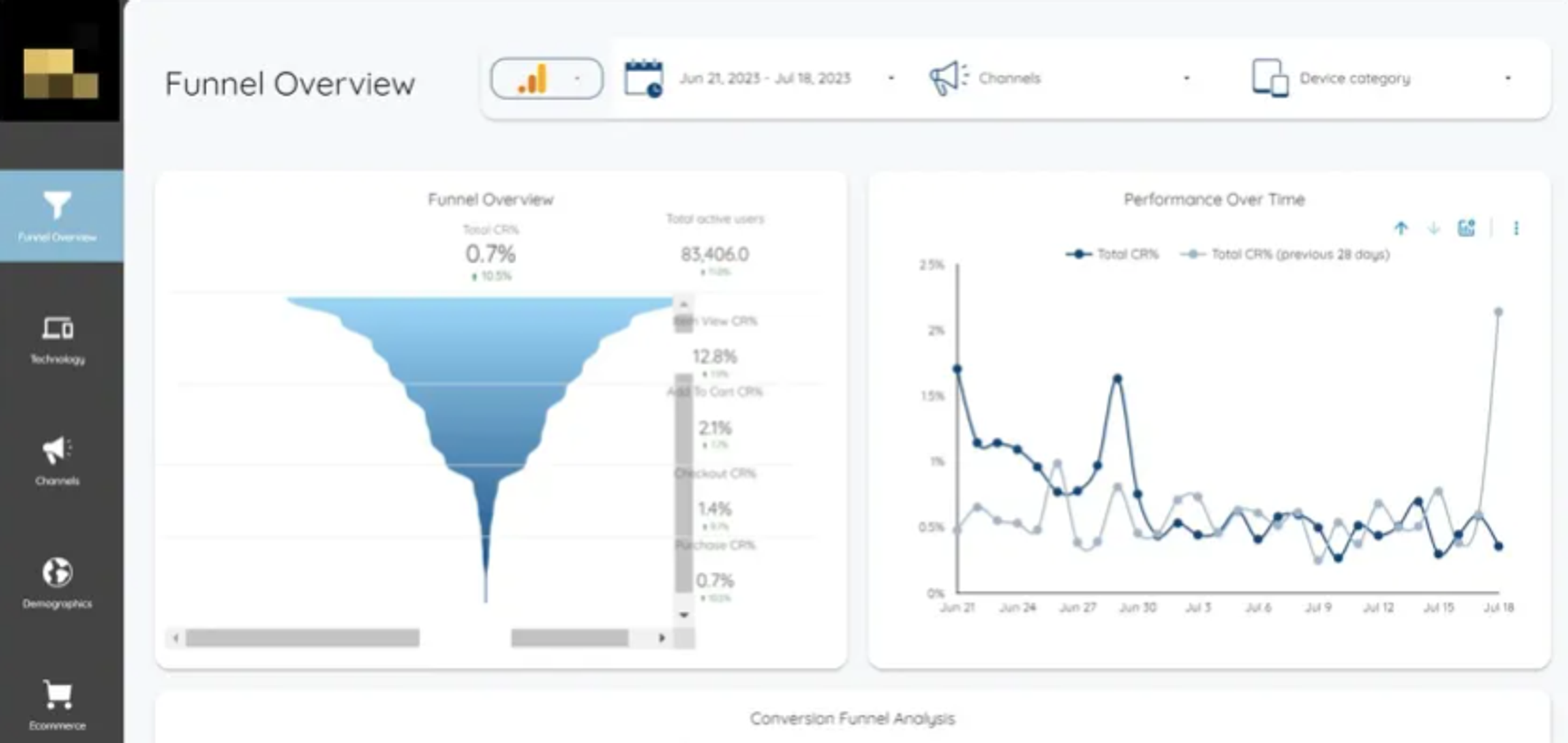The eCommerce KPIs You Need in Your Report (And Those You Should Stay Away From)
Posted on 10/9/2023
Reviewed by Arnt Eriksen updated at 10/23/2023
Introduction
In business, knowing your numbers can be the difference between success and failure. But which ones really matter? In this article, we'll highlight the crucial eCommerce KPIs you need to become a real eCommerce boss.
Like this guy:

We will tell you which ones to use in your reports and warn against those that may throw you off course. Read on for an actionable approach to your eCommerce analytics.
Essential eCommerce KPIs You Need in Your Report
These are the KPIs all eCommerce businesses should pay attention to. Depending on your industry and goals, some might be more important than others. But to get a clear picture, you need to look at all of them.
1. Sales Conversion Rate

What It Is: This shows how many people visiting your site actually buy something.
How to Work It Out and Boost It: Divide the number of sales by the number of visitors, then times by 100 for a percentage. To improve, make your site faster, easier to use, and describe your products better.
2. Average Order Value (AOV)
What It Is: This is how much people spend when they buy from your site.
How to Work It Out and Lift It: Divide your total sales by the number of orders. To raise it, suggest higher-priced items or related products, or offer free delivery when spending over a certain amount.
3. Cost Per Purchase
What It Is: This is how much you spend to get a new customer.
How to Work It Out and Lower It: Divide the total you spend on marketing and sales by the number of new customers. To bring it down, target your ads better, make your site easier to find online (SEO), and encourage your customers to refer their friends.
4. Customer Lifetime Value (CLV)
What It Is: This is the total money you expect one customer to spend in your store during their lifetime.
How to Work It Out and Boost It: CLV can be complex to calculate but usually involves tracking a customer's purchases over time. To increase it, try loyalty programs, make customers happier, and use personalized marketing.
5. Shopping Cart Abandonment Rate
What It Is: This is the percentage of shoppers who put items in their cart but then leave without buying anything.
How to Work It Out and Lower It: Divide the number of incomplete purchases by the number of carts created, then times by 100 for a percentage. To bring it down, make the checkout process easier, offer more ways to pay, and send reminder emails about abandoned carts.
6. Bounce Rate
What It Is: This is the percent of people who leave after looking at just one page on your site.
How to Work It Out and Reduce It: Divide the number of single-page visits by the total visits, then times by 100 for a percentage. To lower it, make your pages load faster, ensure your site works well on mobiles, and make your content more relevant.
7. Repeat Customer Rate
What It Is: This shows the percent of customers who buy from you more than once.
How to Work It Out and Boost It: Divide the number of repeat customers by the total number of customers, then times by 100 for a percentage. To improve it, provide excellent service, offer loyalty rewards, and use personalized marketing.
8. Site Traffic
What It Is: This is how many people visit your online store. This will let you know how well your search engine optimization efforts are going.
How to Work It Out and Increase It: Most website platforms provide this data. To bring in more visitors, optimize your site for search engines (SEO), use paid ads, and market on social media.
9. Net Promoter Score (NPS)
What It Is: This score shows how likely your customers are to recommend you to others.
How to Work It Out and Improve It: You can calculate this by asking customers how likely they are to recommend you (on a scale of 0-10), and grouping responses. To boost it, ask for customer feedback, improve service, and reward loyal customers.
10. Return On Advertising Spend (ROAS)
What It Is: This shows how much money you make for each dollar you spend on ads.
How to Work It Out and Boost It: Divide the revenue from ads by the cost of those ads. To increase it, target your ads better, try different ad platforms, and keep a close eye on how your ads are doing.
11. Gross Margin
What It Is: This is your total sales, minus the cost of making the goods, divided by your total sales. It shows how well your business is doing.
How to Work It Out and Improve It: Subtract the cost of goods sold from the total sales, then divide by total sales, and times by 100 for a percentage. To improve it, try different pricing, reduce costs, and make your business more efficient.
12. Cost of Goods Sold (COGS)
What It Is: This is what it costs to make the goods you sell. It shows how well your business manages costs.
How to Work It Out and Lower It: Add up all the costs directly tied to making your product. To reduce it, find cheaper suppliers, manage your inventory better, and improve how you make your products.
13. Inventory Turnover Rate
What It Is: This shows how often you sell and replace your inventory. It helps you understand how well you're managing your stock.
How to Work It Out and Boost It: Divide the cost of goods sold by your average inventory. To increase it, predict demand better, reduce inventory, and improve your sales strategies.
14. Churn Rate
What It Is: This is the percent of customers who stop buying from your online store. It shows how well you're keeping your customers.
How to Work It Out and Lower It: Divide the number of customers you lose by the total number of customers, then times by 100 for a percentage. To reduce it, improve your customer service, make your site easier to use, and run better customer retention programs.
15. Refund and Return Rate
What It Is: This is the percent of products sold that are returned. A high rate could mean problems with product quality or customer satisfaction.
How to Work It Out and Reduce It: Divide the number of returns by the number of sales, then times by 100 for a percentage. To bring it down, make better products, describe your products clearly, and use strict quality control.
16. Time Spent on Site
What It Is: This is the average time a visitor stays on your website. The longer they stay, the more they might be interested in what you offer.
How to Work It Out and Increase It: Most website platforms provide this data. To get visitors to stay longer, make your content better, improve how easy it is to get around your site, and make your pages load faster.
17. Revenue Per Click (RPC)
What It Is: This is the average money you make from each click in a pay-per-click ad campaign. It shows how well your online ads are doing.
How to Work It Out and Boost It: Divide the revenue from ads by the number of clicks. To increase it, improve your ads, target the right people, and make your landing pages better.
18. Traffic Sources and Revenue
What It Is: This represents where the visitors to your website are coming from and how much revenue each source is generating.
How to Work It Out and Increase It: Website analytics can show you the breakdown of your traffic sources, which may include organic search, paid advertising, social media, referrals, and direct traffic. By multiplying the traffic from each source by your conversion rate and average order value, you can work out the revenue each source brings in. To increase it, you could optimize your best-performing sources and work on improving the less successful ones.
19. New vs Returning Customers
What It Is: This differentiates between customers who have purchased from you for the first time and those who have returned to make additional purchases.
How to Work It Out and Improve It: Your website analytics will allow you to separate customers into these two categories. Divide the number of new customers by the total number of customers for a percentage of new customers. Do the same for returning customers. To improve, offer incentives for first-time buyers and develop loyalty programs for returning customers.
20. Net Profit
What It Is: This is the amount of revenue that remains after all operating expenses, taxes, and additional costs have been deducted.
How to Work It Out and Increase It: Subtract all your costs (including COGS, operating expenses, taxes, and other costs) from your total revenue. This will give you your net profit. To increase it, look for ways to increase your revenue (like improving traffic sources, boosting your conversion rate, etc.) and/or reduce your costs (like lowering COGS, operating more efficiently, etc.).
eCommerce KPIs to Be Cautious of
1. Total Site Traffic
This is the total number of people who visit your site. However, a high number doesn't always mean more sales. It's important to focus on the quality of traffic, not just quantity.
For example, if we launch a Performance Max or Display campaign on Google Ads, the traffic can often triple. But it doesn't mean that the conversions will.
So there has to be a balance between quality and quantity.
3. Page Views
This is the total number of pages viewed on your site. However, more views doesn't always mean people are engaged. They might view many pages but not find what they're looking for. So, it's more useful to track other metrics like time spent on page or conversion rate.
4. Google Ads Quality Score
This is Google's way of rating your ads and keywords. A high score may not lead to more sales or profits. Also, it's tricky to measure this score and its impact on your business. So, use it as a guide, but focus more on what brings actual sales.
How to Effectively Use Your eCommerce KPIs
Building a Looker Studio Report

Looker Studio, previously known as Google Data Studio is a great tool to create reports for your eCommerce KPIs. It lets you track your KPIs in one place and see how they change over time. With Looker Studio, you can easily understand your data and make better decisions for your business.
Regular Monitoring and Evaluation
To use your eCommerce KPIs effectively, you need to keep an eye on them regularly. This way, you can spot trends, catch problems early, and see what's working best. It's also crucial to review your KPIs from time to time to make sure they're still helpful and relevant.
Linking KPIs with Goals Using OKRs
With the OKR method, you connect your goals (objectives) to the things you can measure (key results or KPIs).
Then, you work on actions that will improve these KPIs and help you reach your goals.
For example, if your goal is happier customers, you might use KPIs like Net Promoter Score or Customer Lifetime Value, and then put efforts into improving these scores. This way, your KPIs directly help your business goals.
We are currently using this method, and loving it.
Tools for Tracking and Analyzing eCommerce KPIs
There are many tools available that can help you track and analyze your eCommerce KPIs. These range from Google Analytics for website metrics, to CRM systems for customer data, to social media analytics for social media KPIs. These tools can provide valuable insights and make it easier to monitor your KPIs.
Conclusion
We've talked about many helpful KPIs to track like Sales Conversion Rate, Average Order Value, and Customer Acquisition Cost. But be careful with KPIs like Total Site Traffic or Social Media Followers. They might not show the full picture of your business's success.
Knowing what each KPI means for your business is key. Each KPI can tell you something different about your sales, customers, or marketing. Picking the right KPIs and using them well can help your business grow. So remember, KPIs are more than just numbers. They're tools to help you understand your business and make good decisions for the future.
Frequently Asked Questions
1. What are KPIs in eCommerce?
KPIs, or Key Performance Indicators, are measures used in eCommerce to check how well a business is doing. They help track progress towards goals like increasing sales, getting more customers, or improving marketing.
2. Why are eCommerce KPIs important?
eCommerce KPIs help you understand your business better. They show what's working and what's not, so you can make informed decisions to improve your performance.
3. What are the most important eCommerce KPIs?
Some of the most important KPIs include Sales Conversion Rate, Average Order Value, and Customer Acquisition Cost. But the 'best' KPIs depend on your business goals.
4. Can I trust all KPIs?
Not all KPIs give a full picture of your business's health. For instance, Total Site Traffic and Social Media Followers can be misleading. It's crucial to understand what each KPI means and use a mix of them for a full picture.
5. How often should I check my eCommerce KPIs?
It's a good idea to monitor your KPIs regularly. How often depends on your business, but a weekly or monthly check is a good starting point.
6. What tools can I use to track my eCommerce KPIs?
There are many tools for tracking KPIs. Google Analytics can help with website metrics, CRM systems can help with customer data, and social media platforms often have built-in analytics for tracking social KPIs.
7. What are some strategies to improve my eCommerce KPIs?
Improvement strategies can vary based on the specific KPI. However, some common tactics include enhancing website content, optimizing ads, improving customer service, and implementing effective pricing strategies.
8. How do I choose the right KPIs for my eCommerce business?
The right KPIs will align with your specific business goals. If your goal is to increase customer loyalty, for instance, you might choose KPIs like Customer Lifetime Value or Repeat Customer Rate.
9. Are more KPIs always better?
Not necessarily. While it's important to track various aspects of your business, tracking too many KPIs can be overwhelming and lead to confusion. Focus on a handful of KPIs that directly relate to your business goals.
10. How do KPIs relate to my business goals?
KPIs are the measurable outcomes used to gauge whether you're achieving your goals. For example, if your goal is to increase sales, a relevant KPI could be Sales Conversion Rate or Average Order Value.
11. Can KPIs predict future success?
While KPIs cannot guarantee future success, they can help identify trends, measure progress, and guide strategic planning. They provide valuable insight into the overall health and trajectory of your business.
12. How do I interpret my eCommerce KPIs?
Interpreting KPIs involves comparing them against industry standards, past performance, or specific goals. Tools like Google Analytics and various CRM systems can help analyze and visualize KPI data, making it easier to understand.
Meta Advantage+: Why your eCommerce business needs it right now
